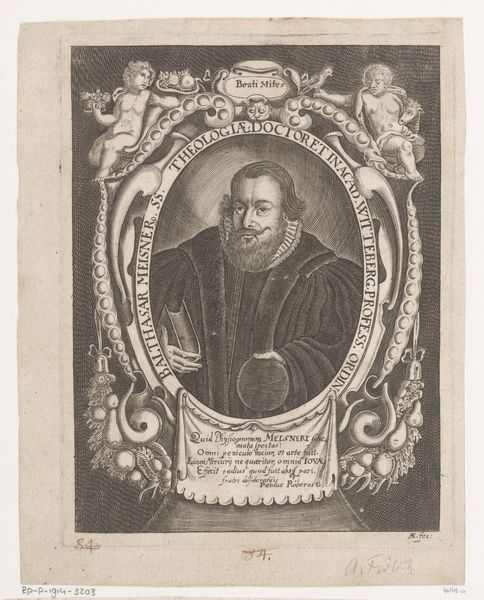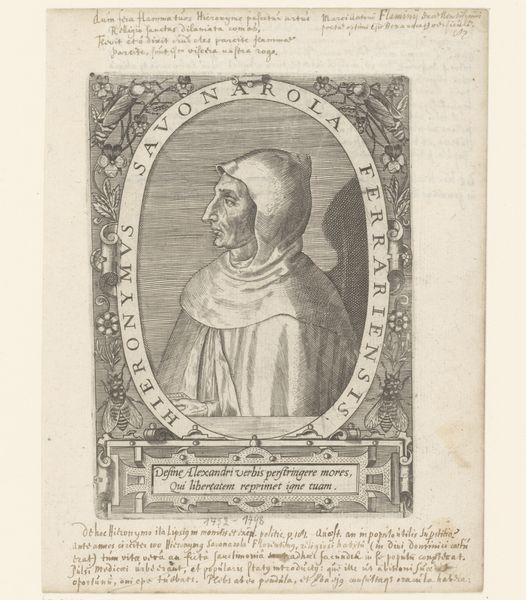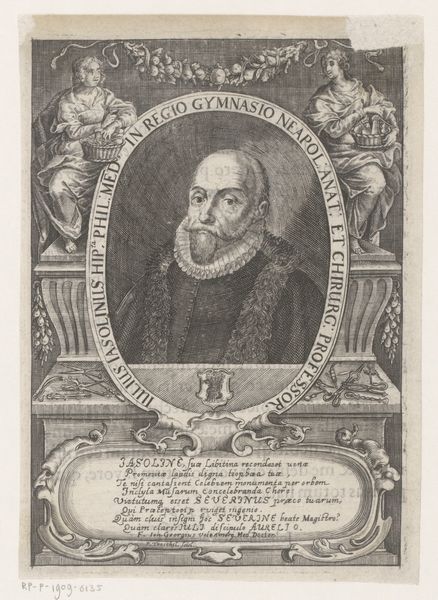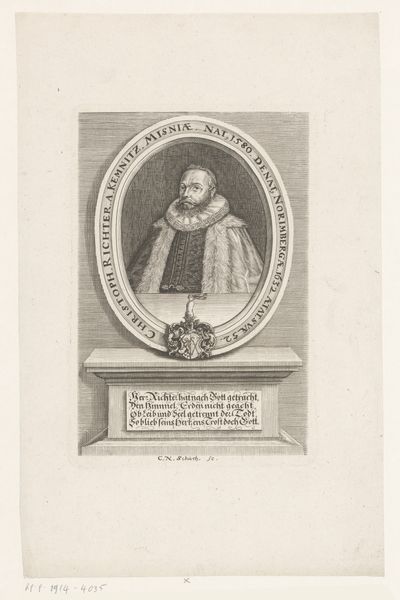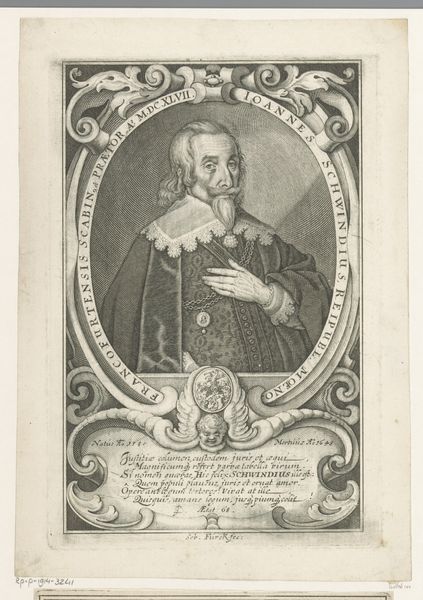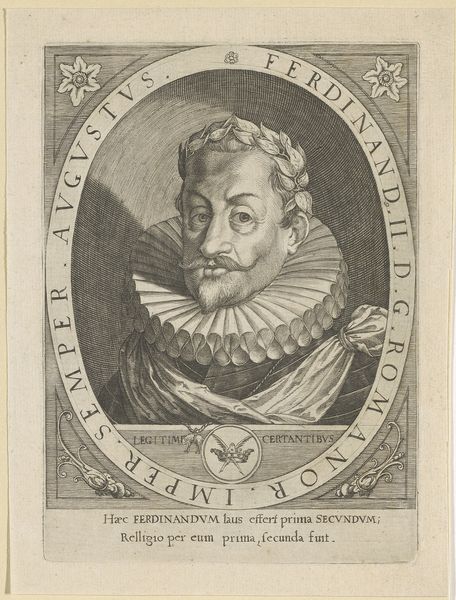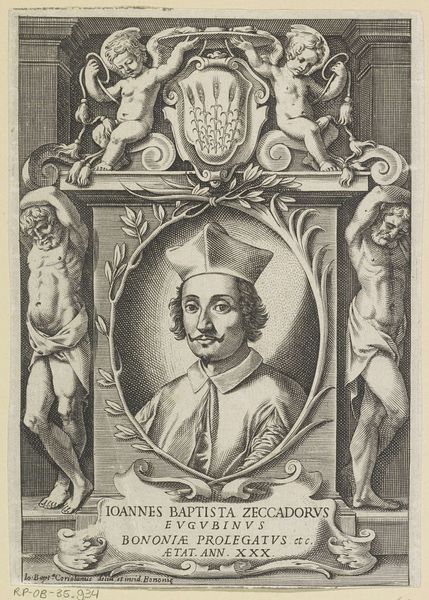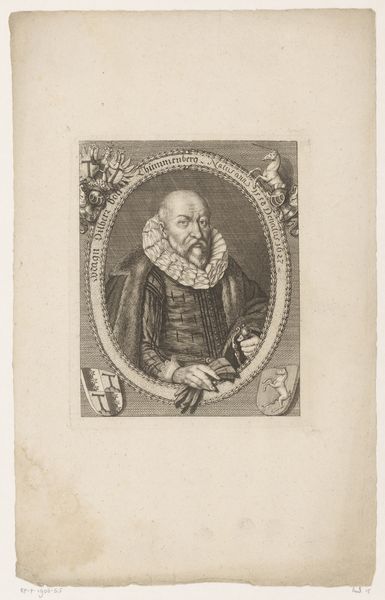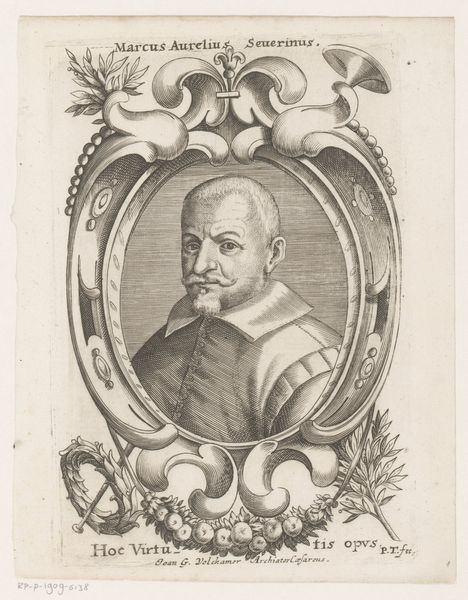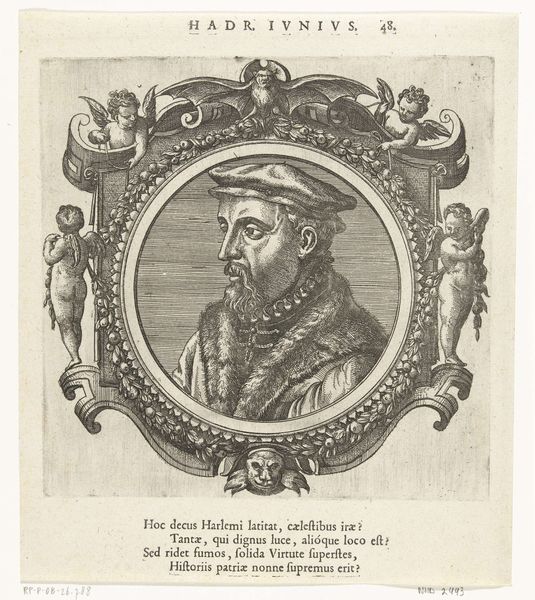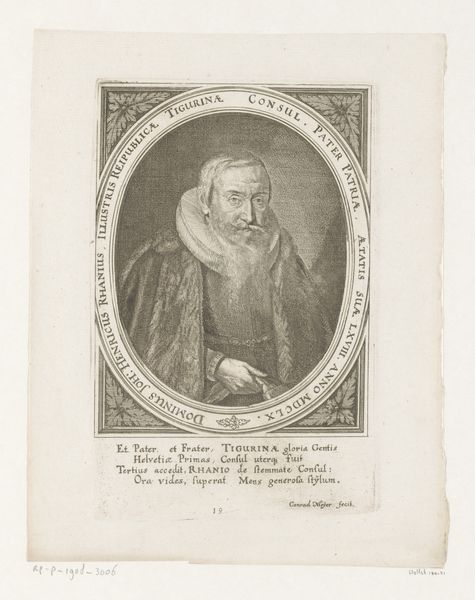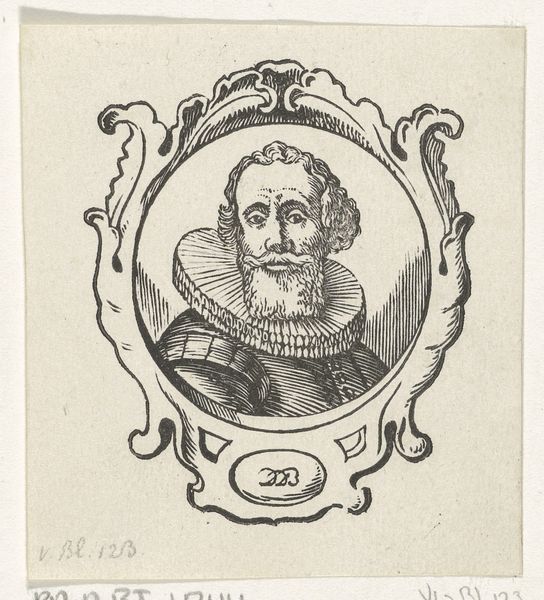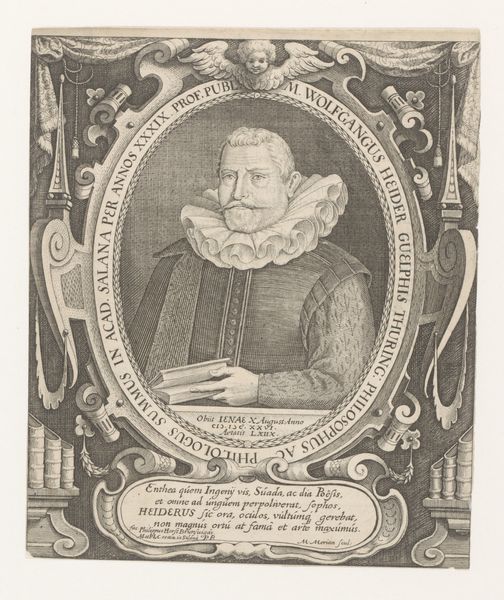
print, etching, engraving
#
portrait
#
baroque
# print
#
etching
#
engraving
Dimensions: height 194 mm, width 129 mm
Copyright: Rijks Museum: Open Domain
This portrait of Matthias Stephani was made in the 17th century by Jacques Granthomme using engraving, a printmaking technique with a long history. The process begins with a metal plate, likely copper, into which the design is incised with a tool called a burin. The incised lines are then filled with ink, and the surface of the plate is wiped clean. When paper is pressed against the plate, the ink is drawn out of the grooves, transferring the image. This technique demands precision and control, each line contributing to the final image. Looking closely, you can see the textures and details achieved through this meticulous process, from the intricate patterns of Stephani's ruffled collar to the cherubic figures in the borders. Engraving, a labor-intensive process, was the printing method of choice for creating detailed, reproducible images, crucial in the dissemination of knowledge and portraiture during this period. The medium itself speaks to the growing importance of reproducibility and the rise of a visual culture tied to social status and intellectual pursuits.
Comments
No comments
Be the first to comment and join the conversation on the ultimate creative platform.
